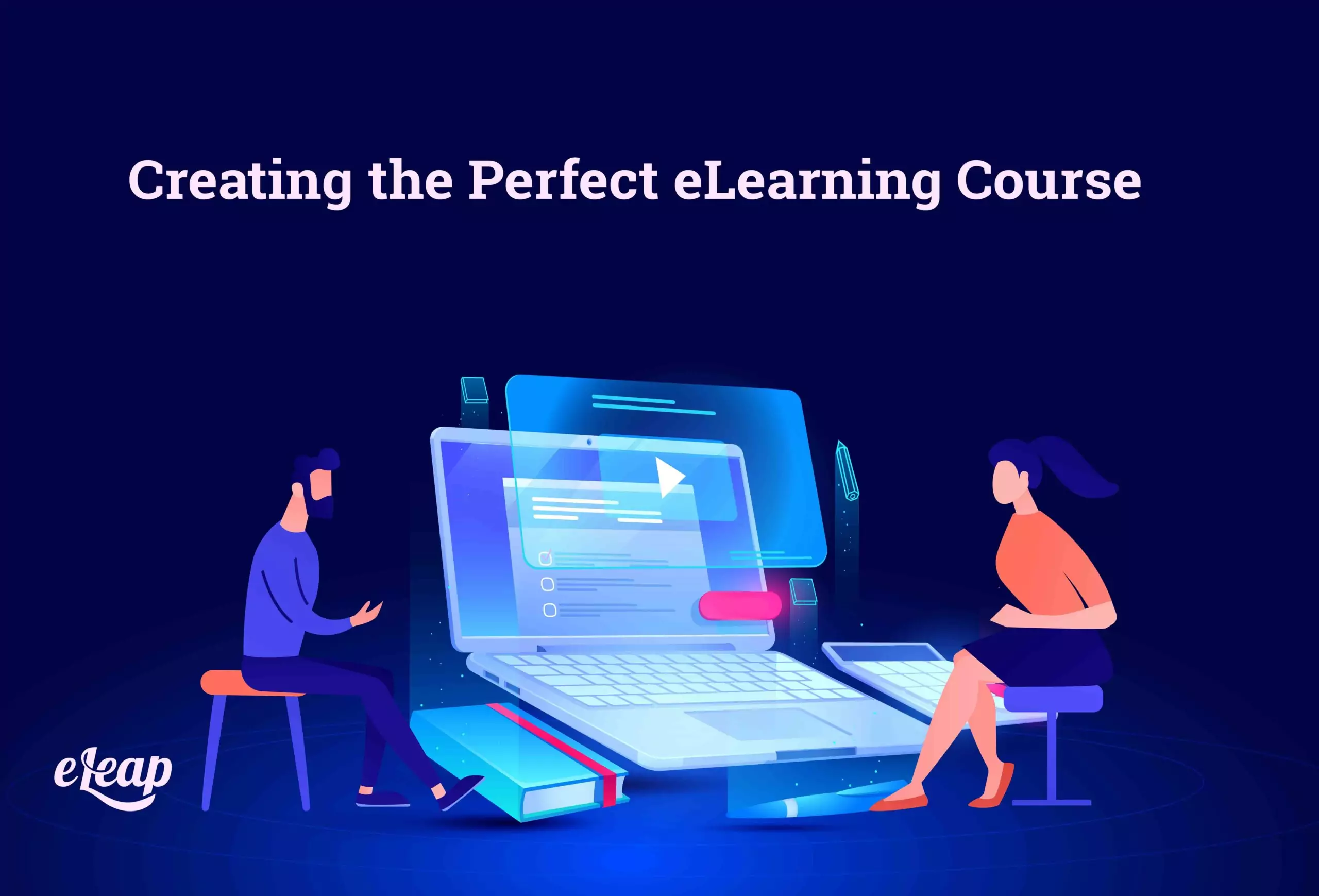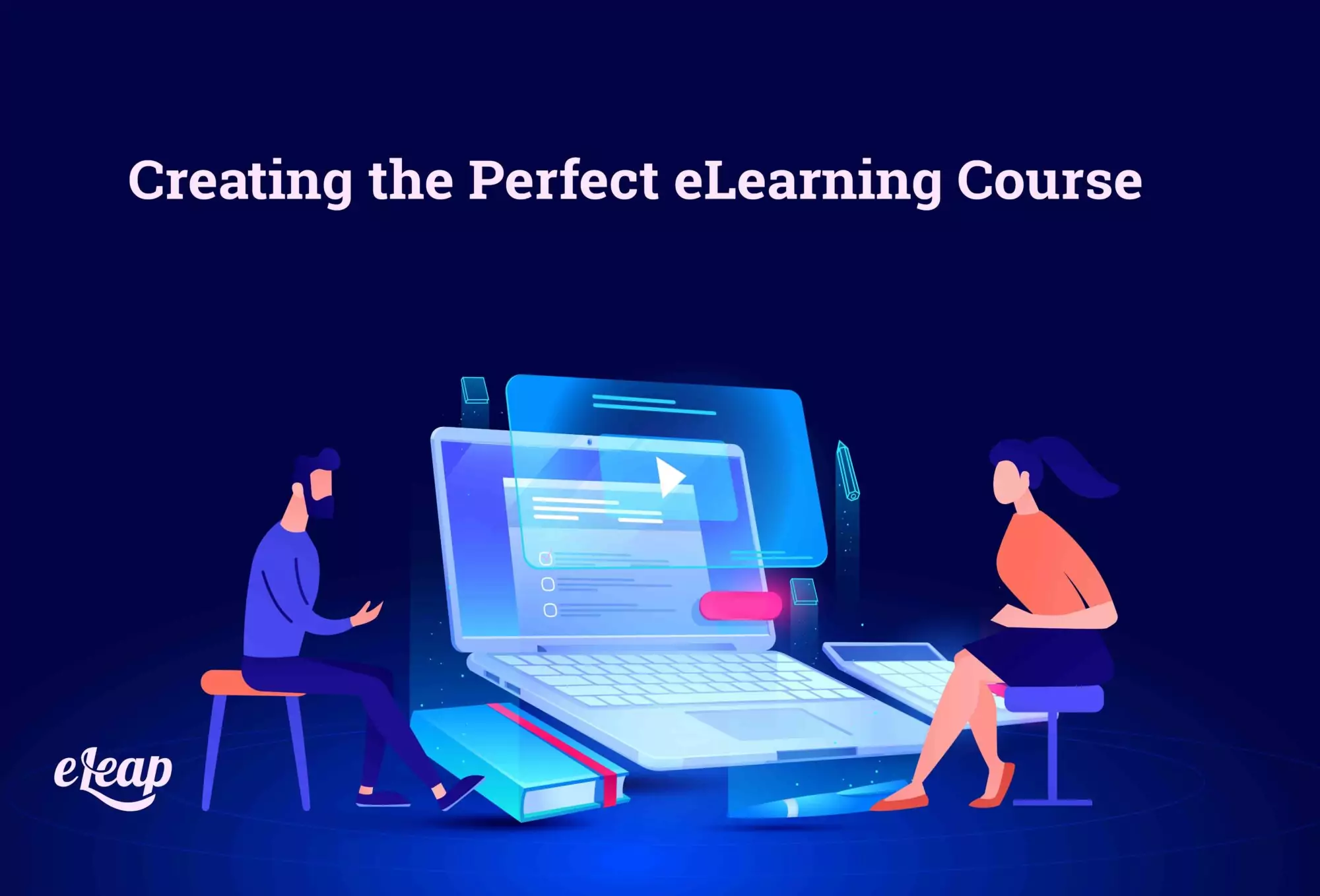Creating the Perfect eLearning Course

The first step in creating your own eLearning courses, whether it be a series of videos or a single module, is to decide what learning outcomes are required from each section of your content. This will ensure that all sections have been created with equal value – no one part outshines another!
The next stage is to plan how long each section should take. You can then draft an outline that breaks down your course into modules and provide specific details on the topics covered within each.
From this point forward, you’ll need to develop additional materials such as images, audio clips, quizzes, etc., before finalizing the entire design. Once these steps have been completed, you’re ready to start developing your project.

Objectives
Decide what objectives you want to achieve by delivering your eLearning course. Do you just want to inform employees about new processes or procedures, or would they benefit from hands-on experience?
If so, consider adding simulations to engage them more deeply. For example, a salesperson might learn something useful while attempting to close a deal but won’t be able to practice their skills until later when they meet prospective customers face to face.
Needs
Determine who needs to use your program. Is it intended for those already working at the company, fresh graduates looking for entry-level positions, current team members performing certain tasks (e.g., administrators), or everyone involved in decision making? Each group requires different types of instruction.
Identify
Identify the target audience. Your learners may have varying levels of computer literacy, knowledge, and expertise. It’s therefore essential to tailor your instructional material accordingly; otherwise, you could end up confusing them.
Consider the age range of people likely to attend the session, any previous educational background or work experience, and where they normally look for information. Also, make sure to include cultural factors.
Goals
Create a clear goal for each learner. What exactly does he/she need to know after completing the course? Does she need to pass a test, fill out paperwork, complete a task, understand a concept better, receive feedback, and feel confident in her role? Developing this objective ahead of time will save you valuable time once you begin designing the actual course.
Barriers
Think through potential barriers to successful completion. In general, there shouldn’t be too many obstacles between someone taking action and gaining positive results. However, if anyone drops out during the process, identify why it happened and try to prevent similar occurrences in future projects. Some things to keep in mind are distractions, lack of internet access, scheduling conflicts, poor physical health, and unfamiliarity with technology, among other possibilities.
Other Challenges
Be prepared for unexpected challenges along the way. As a rule of thumb, anticipate anything that can go wrong and prepare contingency plans beforehand. Make sure you’ve got everything under control, especially since unforeseen problems can arise suddenly due to technical difficulties, human error, weather conditions, natural disasters, and numerous other reasons beyond our control. Having a reliable backup system in place can mean the difference between success and failure.
Once you’ve decided on the type of course you wish to deliver, developed its goals and objectives, identified your learners, and determined the timeframe for delivery; you’re finally ready to roll. The rest is easy…or is it?! Designing high-quality eLearning courses isn’t rocket science, yet there are still a lot of misconceptions surrounding the topic that often lead beginners astray. Below are five common mistakes newbie designers make that can ruin a good thing:
- Don’t underestimate the power of graphics. Although the visual presentation is less effective than traditional methods, graphics are invaluable for conveying complex concepts and helping users remember key points. Use them wisely and strategically. A picture truly says 1,000 words! Graphics aren’t just for pretty pictures either. They also serve practical purposes by highlighting important information and breaking up text blocks for easier reading.
- Avoid “white space” overload. Most companies require lots of documentation and handouts that must fit onto two pages or fewer. Therefore, don’t waste precious real estate showing every last detail. Leave white space around tables, graphs, charts, diagrams, figures, photos, bulleted lists, buttons, etc.
- Keep typography simple. Choose fonts carefully since they affect readability. Stick to sans serif faces unless you require a more complex or exotic font. These are just much easier to read for everyone. Fonts with only upper case letters, fancy letterforms, unusual sizes, odd spacing, multiple font families, and excessive ornamentation are generally considered hard to read.
- Don’t let slide transitions detract from the message. Slideshows contain countless moving parts that distract viewers’ attention away from what matters most: the main content. Try keeping slides to a minimum, maybe 3 per page maximum. Instead, focus on bullets and short paragraphs to avoid losing readers midway through a thought.
- Remember screen resolution limitations. When using PowerPoint presentations, always adhere to the recommended settings stated on the product’s download guide. Otherwise, you risk turning off novice viewers whose monitors were set incorrectly. Since most computers today ship without proper display calibration hardware installed anyway, stick to the default options whenever possible.
If you follow these guidelines, you’ll find yourself armed with enough confidence to tackle almost any problem that arises. Remember, you won’t always get it right on the first trial.
Creating an eLearning course often takes several rounds to get the process right. You’ll need to create a beta version to test before rolling out the final product.
Either have veteran employees test it, or you can hire companies that will test the product for you. After working out all of the bugs, you’ll finally be prepared to deploy your course on your first set of new hires.
Make sure you get feedback from the initial users and find out what you can do to make things better. Remember, eLearning is a continuous process, and your courses should constantly be evolving to keep up with new learning trends.
If you can’t move at the speed of your competitors, you run the risk of being left behind. This is why it’s critical to always remain in motion and stay flexible, and always be prepared to make changes. Contact us today for a free consultation.